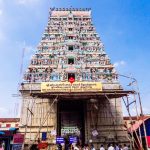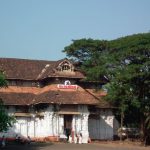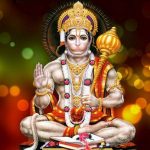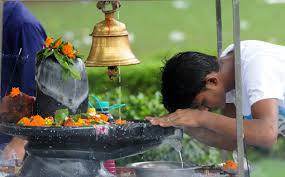
The Hindu festival calendar is incomplete without Mahashivratri- ‘the great sacred and divine night of Lord Shiva’. Almost everyone from a Hindu household might have seen their family performing rituals for Mahashivratri Puja by offering milk, flowers, bel leaves and fruits. They would have even participated in it. There are more than 400 Lord Shiva temples in India, Nepal and other parts of the world. Pashupatinath, one of the most auspicious Shiva temple is located in India’s neighbouring country, Nepal.
Significance of Mahashivratri Puja
Lord Shiva or the ‘Lord of Destruction’ destroys the old, bad, corrupt and evil and replaces it with the new, good and honest. Lord Shiva is also the most powerful god according to Hindu mythology. Additionally, he is the father of Ganapati, who is the supreme God in Hinduism. This was decided by Lord Shiva himself because Lord Ganpati is wise and respects his parents above anything else in the world. According to a legend, Lord Ganapati had a race with his brother Karthikeyan.
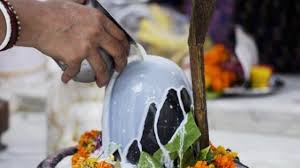
They both had to circumnavigate the whole universe and return to Kailash. The one who reached first was to be declared the winner and the Supreme God. However, Lord Ganapati simply went around his parents, Lord Shiva and Devi Parvati. He also argued that his parents were the whole universe for him.
Mahashivratri Date
Mahashivratri takes place on a new moon day (amavasya) on the 13th or 14th day of the Maagh or Phagun months according to the Hindu calendar. Alternatively, in the Gregorian calendar, it occurs between February and March. It marks the end of winter and the start of spring. In the year 2019, Mahashivratri puja fell on 4th March. Next year(2020) it will be on February 21st.
Mahashivratri is a public holiday in India. Therefore, schools, government offices and most of the private offices remain closed on this day.
Mahashivratri History
There is a mention of Mahashivratri puja in the Puranas like Linga Purana, Skanda Purana and Padma Purana. They mention the origin of the Mahashivratri festival and the importance of fasting for Lord Shiva.
According to one of the accounts, Lord Shiva drank poison to save the world during Samudra Manthan (churning of the ocean of milk). The evil and dark beings (asuras) and the gods needed the nectar of immortality from the ocean of milk. The serpent that helped churn the ocean for the nectar spewed poison into the ocean and onto the asuras. So, all the gods (devas) went to Lord Shiva to get help for this disaster. Hence, Lord Shiva drank all the poison to save everyone. He stored this poison in his throat making it turn blue. Therefore, Lord Shiva is also Neelkanth or ‘blue-throated Lord’. This day thus marks the sacrifice made by Lord Shiva.
Celebrations On The Sacred Night
In different parts of India, Mahashivratri puja celebrations are diverse and vibrant.
In the Northern belt of India, devotees visit the temple and special food items to the Shiva Lingam, the statue of Lord Shiva. Additionally, there is a crowd all day, from morning till evening at all Shiva temples. People observe a fast and spend the day by praying to Lord Shiva.
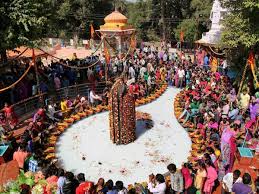
In Southern Karnataka, an unusual practice takes place. Here, children are allowed to do all sorts of mischievous things. Then, they ask for punishment. This is done to represent the story where Lord Shiva punished Lord Brahma for telling a lie.
Madhya Pradesh, the land of temples houses some of the most famous Shiva temples. Thus, hundreds of devotees visit the Mahakaleshwar temple in Ujjain and take part in various poojas in the temple. In the Southern state of Andhra Pradesh and Telangana special processions or ‘Yatras’ take place in order to celebrate the grand festival.
Mahashivratri is a national holiday in Nepal. Elaborate poojas take place at all Shiva temples across the country, especially at Pashupatinath and Shiva Shakti Peetham.
Mahashivratri Rituals
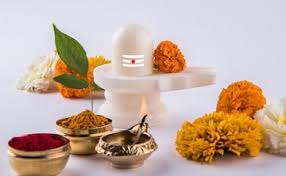
The festivities begin early in the morning. Also, Hindus all across India visit the local or any venerated temple for Shiva puja. The Shiva puja involves the offering of milk, fruits, jaggery, bel tree leaves, flowers. People chant ‘Om Namah Shivaya’, the powerful mantra of Lord Shiva. Observing fasts till late in the night or till the evening is a prominent part of the Maha Shivratri festivities. Devotees consume only milk and fruits on this day.
Mahashivratri Music
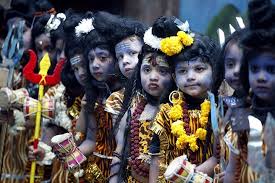
‘Om Namah Shivaya’ is the main mantra chanted in prayer to Lord Shiva. The chanting of this mantra brings peace and spiritual bliss to one’s mind. There are various songs on Lord Shiva which have a mesmerising power.





